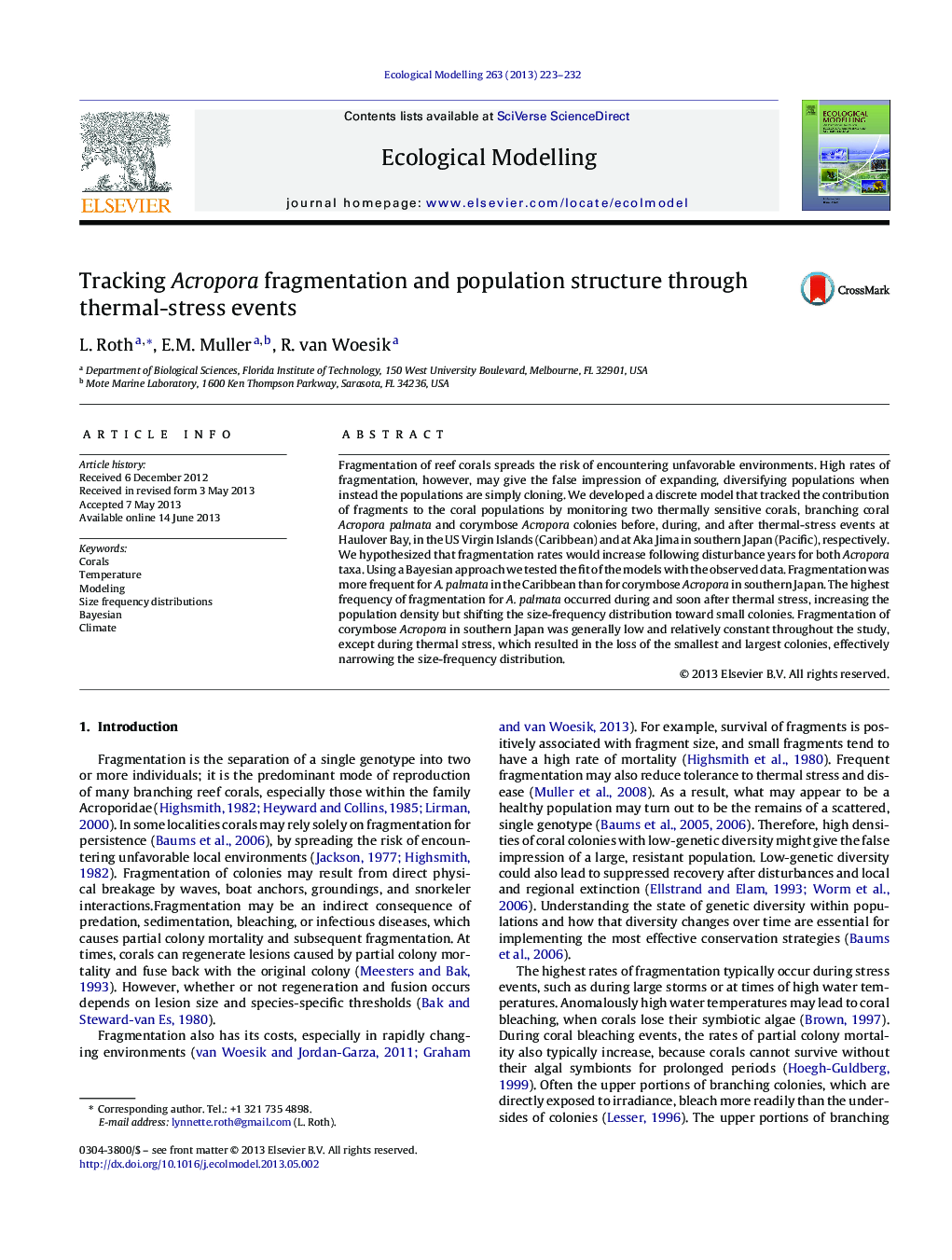| Article ID | Journal | Published Year | Pages | File Type |
|---|---|---|---|---|
| 6297191 | Ecological Modelling | 2013 | 10 Pages |
Abstract
Fragmentation of reef corals spreads the risk of encountering unfavorable environments. High rates of fragmentation, however, may give the false impression of expanding, diversifying populations when instead the populations are simply cloning. We developed a discrete model that tracked the contribution of fragments to the coral populations by monitoring two thermally sensitive corals, branching coral Acropora palmata and corymbose Acropora colonies before, during, and after thermal-stress events at Haulover Bay, in the US Virgin Islands (Caribbean) and at Aka Jima in southern Japan (Pacific), respectively. We hypothesized that fragmentation rates would increase following disturbance years for both Acropora taxa. Using a Bayesian approach we tested the fit of the models with the observed data. Fragmentation was more frequent for A. palmata in the Caribbean than for corymbose Acropora in southern Japan. The highest frequency of fragmentation for A. palmata occurred during and soon after thermal stress, increasing the population density but shifting the size-frequency distribution toward small colonies. Fragmentation of corymbose Acropora in southern Japan was generally low and relatively constant throughout the study, except during thermal stress, which resulted in the loss of the smallest and largest colonies, effectively narrowing the size-frequency distribution.
Related Topics
Life Sciences
Agricultural and Biological Sciences
Ecology, Evolution, Behavior and Systematics
Authors
L. Roth, E.M. Muller, R. van Woesik,
